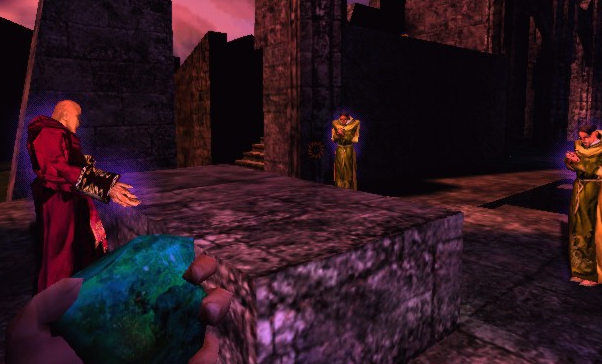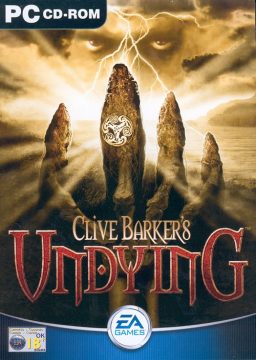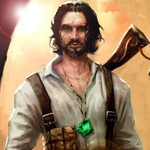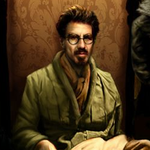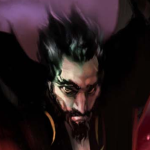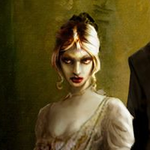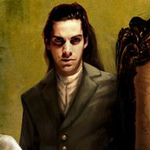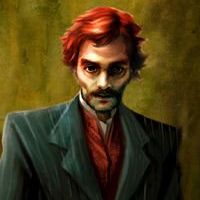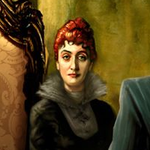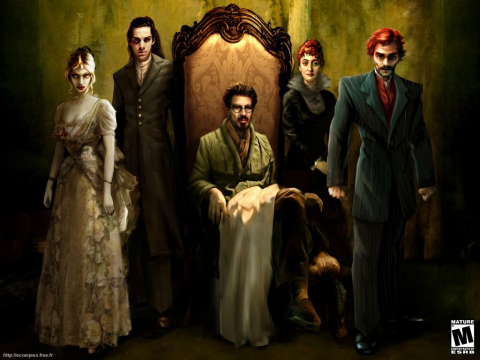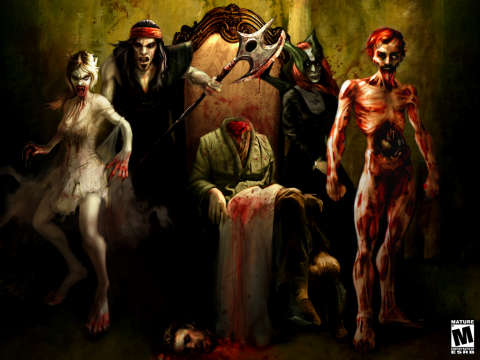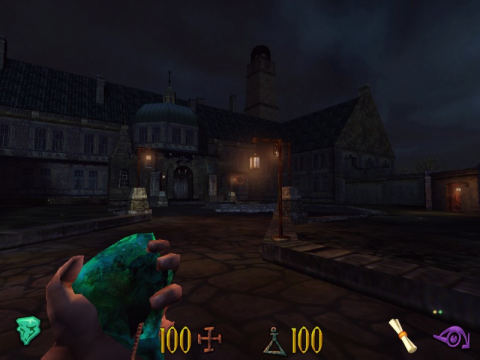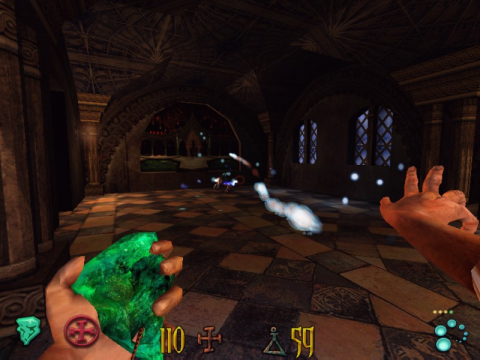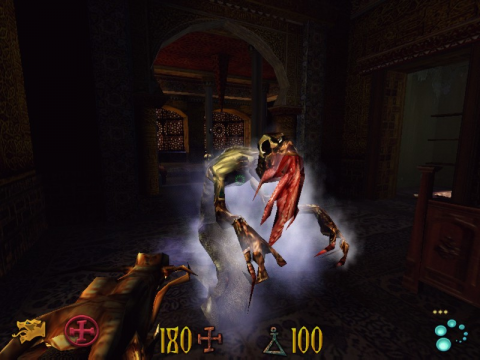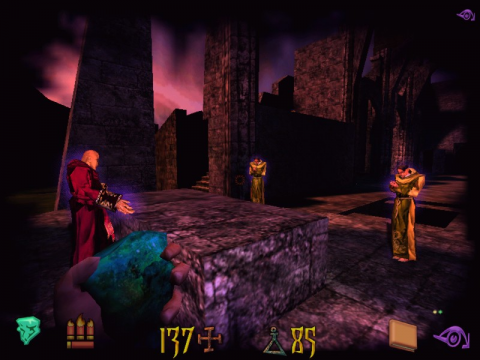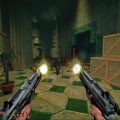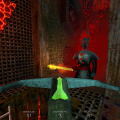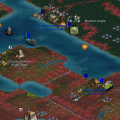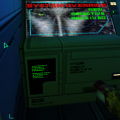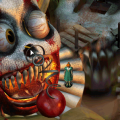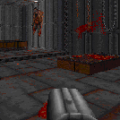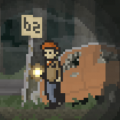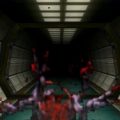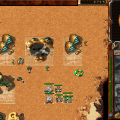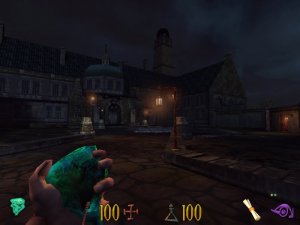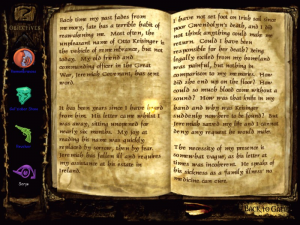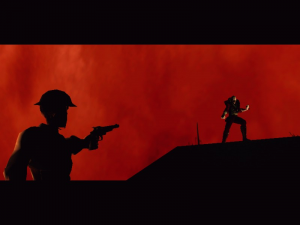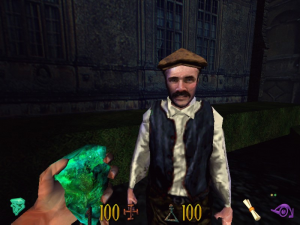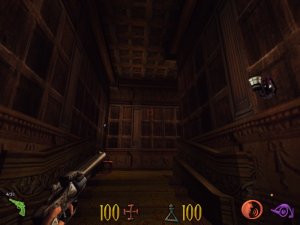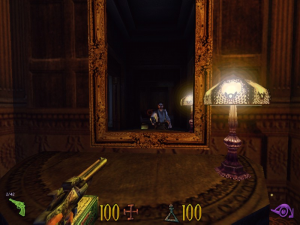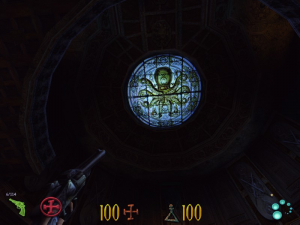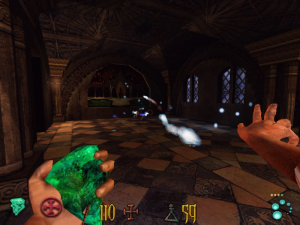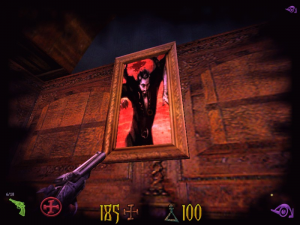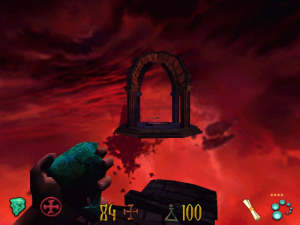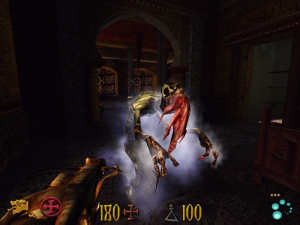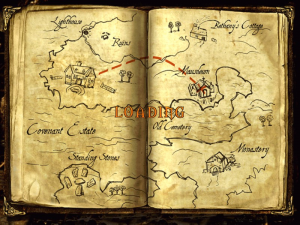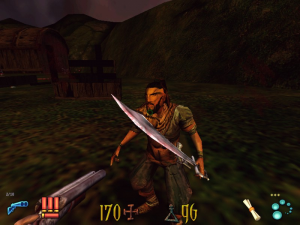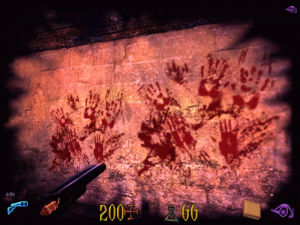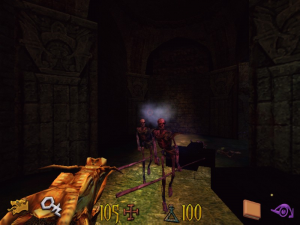(Renowned horror author and director Clive Barker – probably most famous for the Hellraiser franchise – has this interesting affinity towards video games. As early as 1990, Impact Software Development created two games on his movie Nightbreed (dubbed The Action Game an The Interactive Movie), and Hellraiser for the NES is one of the most sought-after unfinished games. The first of several original IP games Barker got actively involved with was Undying, developed by Dreamworks Interactive.
Undying‘s story feels like Clive Barker’s own take on Edgar Allan Poe’s classic Gothic short story The Fall of the House of Usher. The story takes place in 1923, Great War veteran Patrick Galloway is urged by his friend Jeremiah Covenant to visit him in his familial estate, located at the coast of Northern Ireland. The two Irishmen used to be brothers-in-arms during war time dealing with Trsanti, a tribe of fictive pirates versed in black magic. As the enemy leader was about to kill Patrick with a magical stone, Jeremiah saved his life and gave the artifact as a token to his new friend. Once the war stopped, Galloway became a mystical investigator, wandering around the world and using his fighting skills and magical knowledge to get paid. As you can guess, those talents might get in handy in a first person shooter.
Bed-ridden and on the verge of death, Jeremiah tells his old friend the sad story of his family. Indeed, after reopening the mansion in 1860, his father grew obsessed with archeology and genealogy, unearthing ancient standing stones on a small island in the center of his extensive domain. As children, Jeremiah and his four siblings stole a book from their father’s library and ended up performing a ritual on the Standing Stones Island, causing the anger of an ancient force and eventually cursing them all. The siblings became insane and eventually died, leaving Jeremiah alone… or so he thought. The power of the curse brought back his siblings, turning them into ghastly monsters, haunting their last living brother. To repay his life debt, Galloway swears to put the siblings to rest and to decipher the mystery behind the Standing Stones.
Characters
Patrick Galloway
The Hero. A war veteran, versed in mystical knowledge. Channeling Liam Neeson’s voice, Patrick is one pissed off Irishman. His wife was killed by his nemesis: Count Otto Keisinger. After he himself was blamed for the murder, Patrick was forced into exile, wandering around the world as an occult private eye. Most of his earlier investigations ended up being pure superstition, but the Covenant curse seems to be a bit more complicated. The greatest boon he earned from the war is the Gel’zibar Stone, a powerful artifact and key element of the plot.
Jeremiah Covenant
Patrick’s friend. He is the firstborn of the Covenant siblings and the only one left alive, but unfortunately not for long. Inflicted with the same disease that took his sister Lizbeth away, he is bed-ridden and acts as a supportive ally during the game. He provides Patrick with details about the plot, and more importantly a few spells. After doing research, he believes the curse to be real and called Patrick in order to lift it.
Count Otto Kiesinger
Patrick’s nemesis. A power-hungry warlock, he framed the protagonist for his wife’s death. He approached Bethany, one of Jeremiah’s siblings, acting as her teacher and lover in order to tap power from a magical realm called Oneiros. The entrance to it lies below the Covenant estate. After killing his pupil, he retreated into Oneiros and is now waiting for Galloway. He is very interested in the Gel’zibar Stone and its ability to control demons.
Lizbeth Covenant
The youngest sibling, taken away at the age of seventeen. Her mother died giving birth to her; therefore she compensated her lack of maternal love with a passion for literature. Her undead form is a vampire clad in a simple night-gown. Wherever she goes, she is followed by Howlers, rapid small critters. She is Patrick’s first target.
Ambrose Covenant
The black sheep of the family. After committing various felonies he ended up killing his father with a pool cue and was forced to flee the estate. After becoming the leader of Trsanti pirates, he died falling from a cliff in a desperate attempt to flee from the police. As an undead, he appears as a gaunt and pale pirate with a sword. Through the Gel’zibar Stone, he can turn into a gigantic version of himself.
Aaron Covenant
A mix between Basil Hallward and Robert Pickman. A deranged painter addicted to various drugs. He ended up getting on his sister’s bad side so much that she immured him and let the rats eat his body. His ghost will nag Patrick during the entire game; giving cryptic advice, wreaking havoc or summoning enemies. It is necessary to find his flayed body to end his torment.
Bethany Covenant
Aaron’s twin sister. As Keisinger’s lover, she tried to learn all his secrets but eventually failed. In life, she grew hideous flesh eating plants in the estate’s greenhouse. In death, she created a magical realm called Eternal Autumn where she awaits Patrick. She is the final sibling to put to rest.
The progression through the game is fairly simple. Catch a glimpse of one of the siblings, explore the mansion and talk to the servants to learn more about their hiding places, explore parts of the Covenant domain, find the sibling and behead them. Your first task will be to get the appropriate tool to chop their head off. After that is done, it’s the same routine. All siblings possess their own domains: a maze of catacombs, a pirate cove, a cottage, etc. They also have their own underlings. While Lizbeth always throws weak Howlers at you, the cast of monsters gets bigger and scarier as the game progresses. Most of them are really horrifying, unique and unnerving. They got the authentic Clive Barker vibe, and many of them look like rejects from Hellraiser or the Cthulhu Mythos. Speaking of Lovecraft references, you will even meet a Hound of Tindalos cleverly called Hound of Gel’zibar. Don’t worry, he’s friendly. Every enemy triggers a unique third-person animation if they are able to kill you. The only spot on the picture are the Trsanti, who are simply human pirates with guns. They kinda break the mood, but vanish once you kill Aaron.
At the core, Undying plays like a classic FPS of the early 2000s (get keys, shoot monsters, rinse and repeat) but possesses a lot of nice touches. In his left hand Patrick carries a weapon and with his right he can cast spells. Right click equals boomstick, left click means magic. The design of the weapons and the spells was cleverly conceived. Although the revolver and the shotgun are clichèd, the other weapons are a far cry from the orinary. Take, for example, the Tibetan war canon: a huge golden dragon head shooting ice (and making funny noises) which is pretty slow, but has the advantage of not consuming ammo. Another odd but essential tool of trade is the Scythe of the Celt, the only melee weapon of the game, mandatory to behead the Covenant siblings and put an end to their torment. Almost every weapon in the game possesses an alternative fire mode or special ammo. Embracing the newest branch of FPS, the weapons aren’t really scaled by sheer firepower but tend to adapt better to a situation or a style of play. There are also two offensive items stocked into your inventory: the self-explanatory dynamite & the ethereal trap, the only way to dismiss annoying ghosts or Aaron.
In the same way, the spell designs are likewise well-thought out: exploding skulls, enemy control or the always useful haste. But the most original one is probably Scrye: a magical vision that gives you visions or shows you the past. In certain places, you will hear an eerie whisper, saying “look” and the Gel’zibar stone will start glowing, meaning that Scrye might be useful. The most visual example is probably the Covenant family portraits turning a proper family into a vision of horror. There are tons of those little visions in the game and none of them are mandatory. Most of the time, they will give you hints or plot explanation and sometimes they’ll just creep you out. Another great function of Scrye is to light up dark places and making enemies glow. Spells can be boosted up to four levels, making them more deadly or enhancing their duration each time. But the amplifiers are well-hidden through the whole mansion. The Gel’Zibar stone acts as a virtual amplifier for every spell, raising their level by one and pushing back enemies. Last but not least, you will be given the possibility to fly in Oneiros & Eternal Autumn, which sounds cool but is just another way to say “jumping puzzles”.
Running on the Unreal Engine, Undying‘s graphics used to be quite good at release. They have aged a bit, but some vistas remain impressive. The whole atmosphere being a strange mix of Poe and Lovecraft, the game tends to alternate creepy Gothic environments with open spaces. The huge manor will act as a nexus of sort, with different wings opening up and closing down, and you will explore various places: the ruins of an ancient monastery, a pirate cove, the prehistoric realm of Eternal Autumn and the abyssal Oneiros. Most of the time, the atmosphere is as creepy and eerie as it should be. But the developers tend to break those claustrophobic parts with sunny (well, more like dusky) natural open spaces filled with human enemies. After fighting undead and crazy eldritch abominations for hours, it really seems out of place for a horror game.
The level design isn’t exactly stellar, owing to the fact that the game progression is very straight-forward. Every door in the hallway is closed except for the one with the trail of blood and two monsters waiting for you behind it. Still, you can venture around the large environments to find secrets and more things to use Scrye on. This drawback is compensated for by a pace that never disappoints. Backtracking in the mansion is omnipresent but never tedious, as familiar places change. The originally relatively safe kitchens, for example, will turn into a deadly trap once Aaron gets angry.
Audio-wise, it’s a mixed bag. The sound effects are great: the enemies sound creepy, the weapons feel unique and everything is made to make you unnerved. The voice acting is poor at best, between the forced Irish accent and the over-the-top narration, it gets old quickly. You will never forget the repeated “stuck” & “jammed” samples Patrick spurts every three seconds when trying to open a locked door. Ambrose is voiced by Clive Barker himself. Composer Bill Brown (Rainbow Six series, Return to Castle Wolfenstein) made some great tracks, very Danny Elfman-esque for the most part. A shame some of those are directly taken from earlier material from the studio’s production like Jurassic Parkgames.
Undying‘s strength dwells within its plot and its characters. Cut-scenes, journals, mansion’s servants and Scrye visions explain in great detail the story of the siblings, shaping their character. All the main antagonists feel fleshed-out and strangely sympathetic in some aspects, as would be expected by those familiar with Clive Barker’s short stories. The plot never disappoints and increases in complexity as the story progresses. Unfortunately, the same cannot be said of the rushed ending. It seems that Dreamworks Interactive meant for it to tie into an extension or a sequel, but since the game bombed, further plans were canceled. The game was only released for Windows PCs and Macintosh. A PS2 port was even designed at one point but never released.
In its time, Undying was called the “best game no one played” by Gamespot. The game was well-received by the critics but flopped in stores, which is a damn shame. A lot of criticism came from the absence of multiplayer. A patch was supposed to come out but never did. On the other hand, no one remembers Deux Ex‘s multiplayer, so maybe that’s for the best. A few years after Undying came out, Dreamworks was merged with Westwood into EA Los Angeles and started working on a PC Version of Medal of Honor, turning a fantastic PlayStation game into a never-ending stream of World War II shooters. The studio was rebranded Danger Close Games and worked on a number of Medal of Honor games, before those fell out of popularity, and was then renamed DICE Los Angeles.
